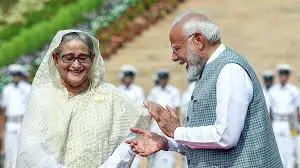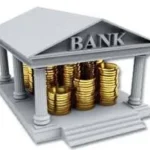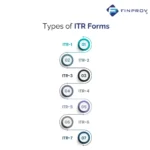The last 15 years have been the most eventful period of economic growth and transformation for Bangladesh, elevated to the position of one of the fastest-growing economies in Asia. Here is an overview of how this has all shaped Bangladesh’s economy over the past 15 years:

1. Consistent GDP Growth
- Rapid Economic Expansion: Bangladesh has witnessed an average growth of approximately 6-7% per annum over the last 15 years. In some years, it exceeded 8%, qualifying as one of the top growth performances in the world.
- Drivers of Growth: Strong export-oriented ready-made garment industries, remittances by Bangladeshi workers abroad, and rising domestic consumption have been driving the economy.
- Ready-Made Garments (RMG) Industry Booming
- Global Export Leader: Bangladesh has emerged as the second-biggest exporter of ready-made garments in the world after China. It also contributes more than 80% to the country’s export earnings while supporting millions of workers working therein, majorly women.
Infrastructure Improvements: Government and private sector spending on infrastructure, like building new industrial parks and upgrading port facilities, is helping support the RMG sector’s growth. - Poverty Alleviation: High-speed economic growth has resulted in a significant decline in poverty. The percentage of those living below the national poverty line fell from over 40% in the mid-2000s to close to 20% in 2020.
- Human Development Index: There is significant improvement in the HDI score of Bangladesh, led by advances in education and health, and gender equality. There has been remarkable development in life expectancy, literacy, and access to clean water and sanitation.
4. Infrastructure and Energy Development
Megaprojects: The government has launched a number of megaprojects that include the Padma Bridge, Dhaka Metro Rail, and a host of power plants. This is further likely to enhance infrastructure, connectivity, and productive bottlenecks.
- Energy Sector: Bangladesh has made some progress in augmenting its capacity in the energy sector, especially in the setting up of new power plants and generating more electricity. This has somewhat mitigated chronic power shortages that had become a big impediment to industrial growth.
5. Financial Sector and Governance Challenges
- Banking Sector Issues: The financial sector has been characterized by non-performing loans, scandals in banking, and can also be plagued by questions over the lack of good governance and transparency. These sometimes turned risk to economic stability.
- Governance and Corruption: There have been initiatives to reform governance, and corruption and bureaucratic red tape are pervasive. This could occasionally retard the implementation of reforms and projects.
6. Digital Transformation
ICT Growth: The country has recently undergone a very rapid digital revolution, and the growth in the ICT sector within Bangladesh has also been very fast. The government, under its “Digital Bangladesh” initiative, envisions building a knowledge-based economy by 2021 with the help of investments in e-governance, digital infrastructure, and education.
- Mobile and Internet Penetration: Fast growth in mobile phone usage and adoption of the Internet in the country has thus acted as a catalyst in boosting digital services and e-commerce.
7. Demographic Dividend
- Young Workforce: The demographic dividend was given by the comparatively young population of Bangladesh. The growing workforce acted as one prime factor that played a major role in propelling the economy toward growth, especially in labor-intensive industries like garments and agriculture.
8. Impact of COVID-19
Pandemic Challenges: The COVID-19 pandemic posed several challenges to the economy of Bangladesh, which resulted in a momentary slowdown. Besides affecting the readymade garment sector, it brought weak external demand. Still, the economy responded with remarkable resilience and showed rapid bounce-backs through government impetus and recovery in external demand.
#
- Emerging Sectors and Diversification
- Economic Diversification: The economy of Bangladesh is diversifying increasingly with the continuance of the RMG sector’s dominance. Sectors like Pharmaceuticals, Shipbuilding, and leather goods have come up as new zones of growth.
- Start-up Ecosystem: The ‘start-up’ ecosystem is also under development in Bangladesh. Increased investments in technology and Fintech start-ups further add to the economic diversification.
10. Future Outlook
Growth Ambition: Bangladesh envisions it attaining middle-income status by 2026 and has set ambitious targets for its economy to attain developed nation status by 2041. Attainment of these targets shall be very dependent on continued investments in infrastructure, human capital, and industrial diversification.
- Sustainable Development: Environmental sustainability and climate resilience assume ever greater importance against the backdrop of challenges arising from climate change. The government is undertaking initiatives to strike a balance between economic growth and SDGs.
While a low-income country, Bangladesh is elevated to the status of a lower-middle-income country in the last 15 years, driven by an ambitious growth trajectory fuelled by high levels of economic growth led by RMG, remittances, and massive investments in physical and human development. Looking forward, the outlook remains bright with more scope for growth and diversification, though there are looming challenges.
Related posts:
 Bank Loans Exceed Rs 9 Lakh Crore; Financial Institutions Under Pressure to Secure Additional Funds.
Bank Loans Exceed Rs 9 Lakh Crore; Financial Institutions Under Pressure to Secure Additional Funds.
 Crypto currency Price Updates
Crypto currency Price Updates
 Retail inflation of US falls to 2.9% in July
Retail inflation of US falls to 2.9% in July
 8th Pay Commission 2024: Latest Updates on Notification, Salary Calculator and Key Information
8th Pay Commission 2024: Latest Updates on Notification, Salary Calculator and Key Information
 How to Claim Your Income Tax Refund Online for FY 2023-24
How to Claim Your Income Tax Refund Online for FY 2023-24
 ITR Filing Forms for FY 2023-24 (AY 2024-25): How to Determine the Right Income Tax Return Form for You.
ITR Filing Forms for FY 2023-24 (AY 2024-25): How to Determine the Right Income Tax Return Form for You.